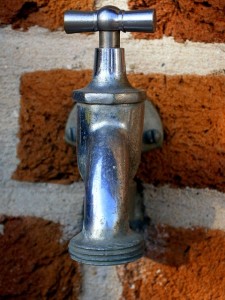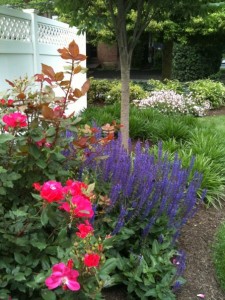 Am I Done Watering Yet?
Am I Done Watering Yet?
If you’ve installed trees, shrubs, or flowers in your landscape in the past year, you may be wondering when you can stop watering them. The first year after a plant is installed is the most critical. We know the larger the plant installed, the longer it will take to repair its root system. It takes time for the roots to regrow the tiny, fibrous roots that will reach out into the soil for moisture. We often get the question in the fall of the year when temperatures start cooling down and reaching the freezing point of, “When can I stop watering my new plants?”
Temperature is a Factor
The great thing about cooler temperatures, is that soil retains moisture longer. Continue to water your new plants in your landscaping until things start to consistently frost. By this time, your soil should have plenty of moisture. Plants will slow down growth in the winter, and most don’t have leaf tissue, flowers, or fruit at that time that need the additional water resources for development. Winter rains and snows will help to add even more moisture to the soil as things remain cold outside.
If you had your plants installed in summer or fall, remember that the next season is also critical for the young plant’s survival. Just because it comes through winter and out of spring looking great, doesn’t mean you should ignore water needs in the following summer. Be sure to nurture your plants for at least that first full year, they’re depending on you to survive.
The Watering Continues
 Use care though, even with a good initial year under your belt, you can still have drought damage to your plants even after they have been in the ground for a number of years. Focus your efforts in drought situations on the largest plants first. Water trees and shrubs deeply. They are the most difficult to remove and replace. It’s better to lose some perennials and flowers than a maturing tree or shrub.
Use care though, even with a good initial year under your belt, you can still have drought damage to your plants even after they have been in the ground for a number of years. Focus your efforts in drought situations on the largest plants first. Water trees and shrubs deeply. They are the most difficult to remove and replace. It’s better to lose some perennials and flowers than a maturing tree or shrub.
If your landscape has suffered from drought damage, we would be happy to recommend what is best to repair or replace what was lost. In some situations, fertilizing your trees and shrubs can help your plants to recover quicker. However, in some situations, you may need to remove a plant and install a new one. Either way, we are capable of performing those services. If you’d like a FREE consultation regarding drought damage and your landscaping, we would be happy to talk to you.

